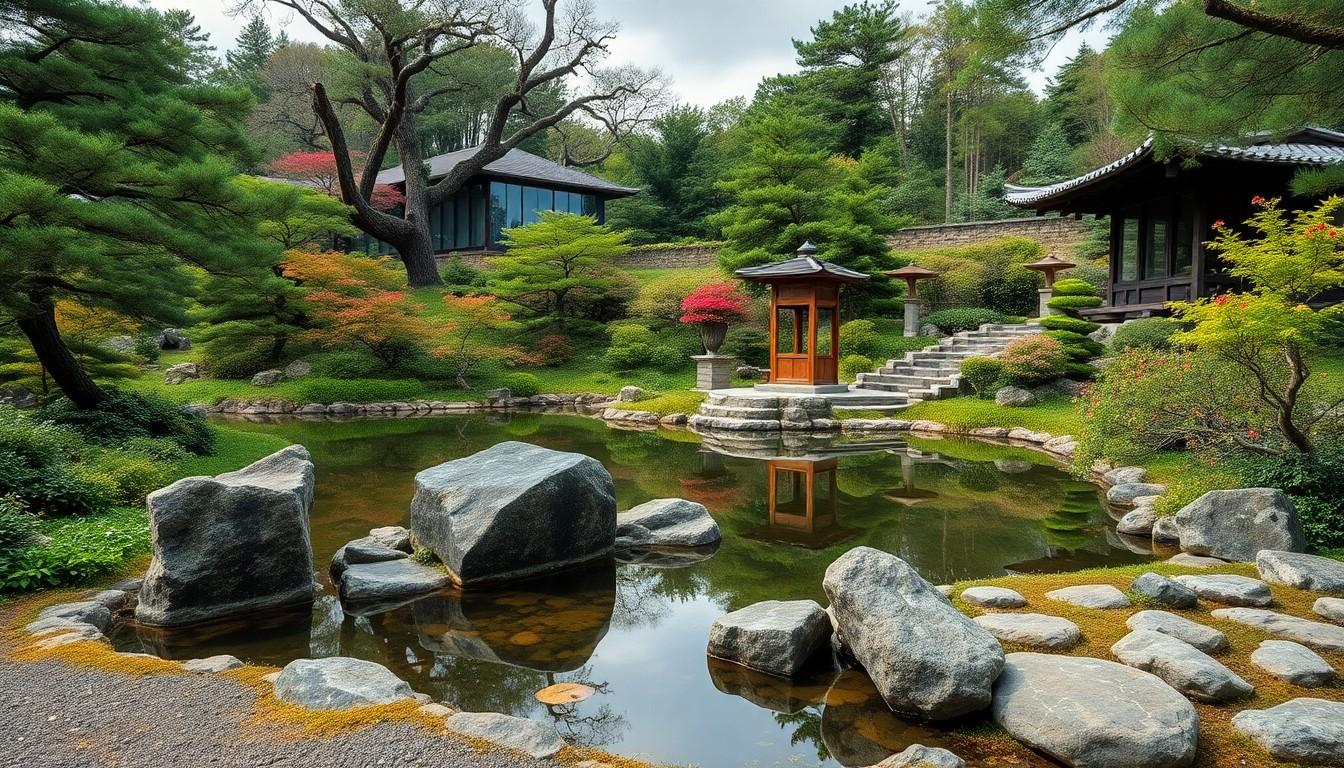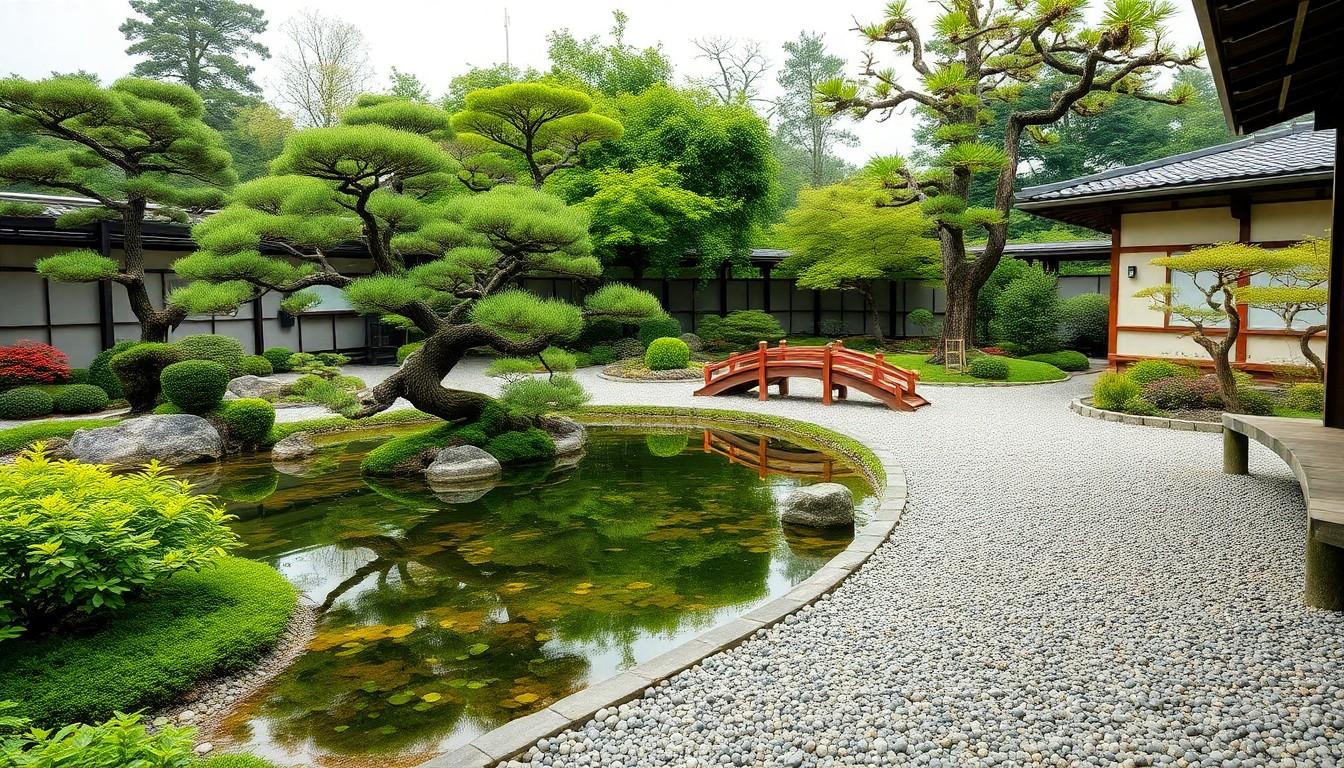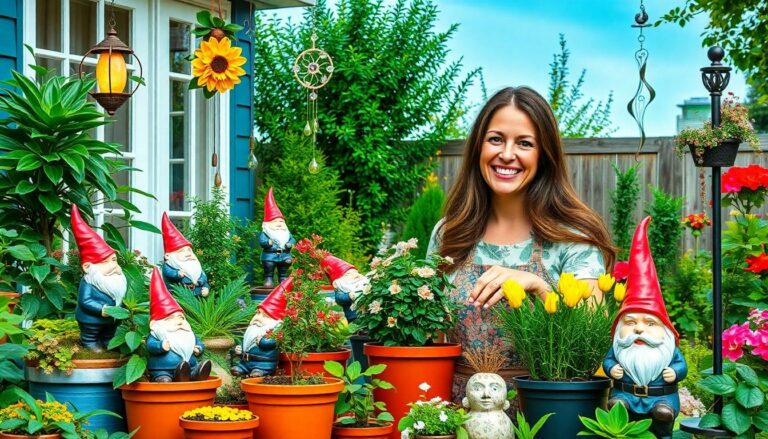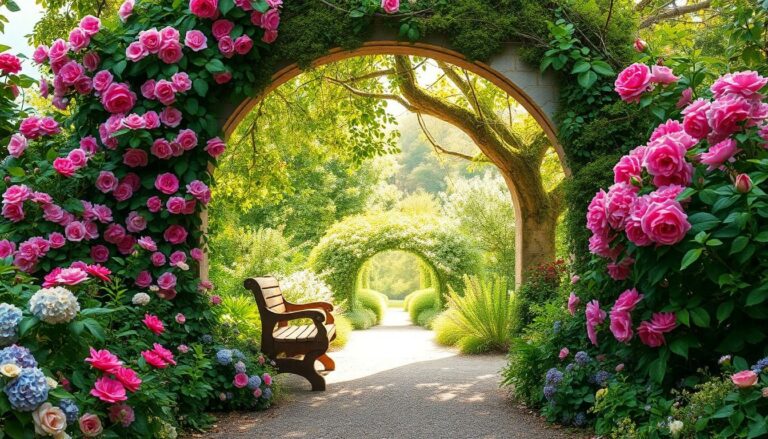Step into the serene world of Japanese garden aesthetics, where tranquility meets artistry in a delightful dance. Imagine a place where raked gravel mimics rippling water and bonsai trees stand as miniature sentinels of nature’s beauty. These gardens aren’t just pretty backdrops; they’re a philosophy wrapped in greenery, designed to evoke peace and reflection.
Japanese Garden Aesthetics
Japanese gardens embody a unique aesthetic that emphasizes harmony and tranquility. The design integrates natural elements, combining water, rocks, plants, and structures to create a cohesive environment. It’s essential to consider how these elements interact with one another.
Water features, such as ponds or streams, symbolize life and renewal. They reflect surrounding landscapes, enhancing the sense of peace. Raked gravel mimics flowing water, inviting meditation and contemplation. Users often find paths winding through these gardens, encouraging exploration and discovery.
Plants in Japanese gardens are carefully selected for their seasonal beauty. Cherry blossoms and maples provide vibrant colors throughout the year. These selections create visual interest while reflecting the changing seasons, which is a significant aspect of Japanese philosophy.
Bonsai trees represent meticulous craftsmanship and patience. Their presence adds a layer of artistry to the space, highlighting the Japanese value of simplicity and elegance. Stones, as integral components, often symbolize mountains or islands, grounding the garden in nature’s essence.
The arrangement and balance of these elements serve a deeper purpose. They instill a sense of mindfulness, promoting reflection and tranquility. A visitor to a Japanese garden experiences a captivating blend of beauty and philosophical depth, embodying the spirit of nature in its purest form.
Key Elements of Japanese Gardens
Japanese gardens incorporate distinct elements that create a harmonious atmosphere. Detailed consideration of each element ensures an immersive experience in nature’s tranquility.
Landscape Design
Careful arrangement of stones, plants, and pathways defines the landscape design. Paths often wind through the garden, encouraging exploration. Rock placements symbolize mountains and islands, enhancing the embodiment of nature. Trees and shrubs frame views, creating layers of space that invite reflection. Each design choice emphasizes balance and simplicity, establishing a serene environment favorable for contemplation.
Color Palettes
Color palettes in Japanese gardens intentionally blend earth tones with seasonal variations. Greens from foliage provide a calming backdrop. Bright splashes of color emerge during blooming seasons, enriching visual appeal. White gravel can reflect sunlight, adding brightness to shaded areas. Seasonal changes in flower colors emphasize the transient beauty of nature and invite appreciation throughout the year.
Water Features
Water features play a vital role in Japanese garden aesthetics. Ponds often serve as focal points, reflecting surrounding elements. Water symbolizes purity and renewal, enhancing feelings of peace. Streams and waterfalls create soothing sounds, contributing to a tranquil atmosphere. The presence of aquatic plants fosters biodiversity while enriching the garden’s visual complexity.
Symbolism in Japanese Garden Design
Japanese gardens embody rich symbolism reflecting nature and spirituality, emphasizing the connection between the physical and spiritual realms. Each element serves a purpose, conveying messages of balance, harmony, and tranquility.
Nature and Spirituality
Nature plays a vital role in Japanese garden design, representing ideals of harmony and peace. Mountains symbolize stability, while water signifies renewal and the flow of life. Rocks are carefully positioned to emulate natural landscapes, translating the essence of the earth into a tranquil space. Plants like cherry blossoms evoke fleeting beauty, reminding visitors of life’s impermanence. Each element not only enhances aesthetic appeal but also creates a meditative environment where spirituality flourishes through nature’s beauty.
Seasonal Changes
Seasonal changes manifest vividly in Japanese gardens, providing dynamic visual interest throughout the year. Flowers bloom at different times, introducing color and life to the landscape. Autumn brings vibrant reds and golds, symbolizing harvest and gratitude. Winter often showcases serene simplicity with snow-covered branches and a focus on minimalism. Every season presents its own narrative, inviting reflection on nature’s cycles. This representation of time reminds visitors of the ongoing relationship between humanity and the natural world, fostering a deeper appreciation for change and continuity.
Types of Japanese Gardens
Japanese gardens exhibit diverse styles, each embodying unique philosophies and aesthetics. These types include Zen gardens, stroll gardens, and tea gardens, each providing distinct experiences and reflections of nature.
Zen Gardens
Zen gardens focus on simplicity and tranquility. Typically featuring raked gravel or sand, these gardens symbolize water and encourage meditation. Large rocks represent mountains or islands, enhancing the garden’s serene atmosphere. Minimalist plant choices, such as moss or small shrubs, complement the overall design. Visitors often find peace in the carefully arranged elements, which invite contemplation. Elements like lanterns can add subtle light and further enhance reflection experiences.
Stroll Gardens
Stroll gardens offer a journey through landscapes designed for leisurely walking. Curved paths guide visitors, revealing various views and scenes. These gardens often incorporate ponds, bridges, and diverse plant life, promoting interaction with natural elements. Seasonal changes enrich visual experiences throughout the year, displaying blossoms in spring and autumn foliage. Large stones and waterfalls introduce sounds of nature, fostering a tranquil environment. Many stroll gardens feature tea houses, encouraging moments of rest and reflection amid nature’s beauty.
Tea Gardens
Tea gardens emphasize tranquility and preparation for the Japanese tea ceremony. They typically include elements like simple stone paths leading to teahouses or pavilions. Plants are selected for their subtle colors and calming scents, enhancing the ambiance. Shade trees offer respite from the sun, creating a serene setting for tea gatherings. Incorporating elements such as lanterns and water features promotes peace and encourages mindfulness during the ceremony. Overall, these gardens are designed to create a meditative atmosphere, celebrating the art of tea and nature’s harmony.
Profound Connection
Japanese garden aesthetics embody a profound connection to nature and spirituality. Each carefully chosen element contributes to an atmosphere of peace and reflection. The seamless integration of stones, water, and plants invites visitors to explore and contemplate their surroundings.
These gardens serve as reminders of life’s impermanence and the beauty of natural cycles. Whether through the simplicity of Zen gardens or the dynamic landscapes of stroll gardens, the artistry and philosophy behind Japanese gardens continue to resonate deeply. Embracing these principles can inspire a greater appreciation for nature’s tranquility and harmony in everyday life.





